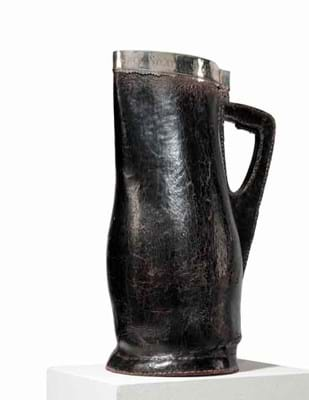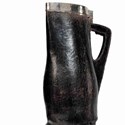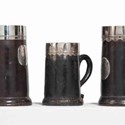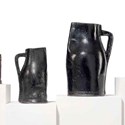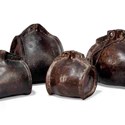Assembled by Dutch collector Ruud Bolmeijer, the 34 lots of jacks, bombards and bottles were estimated at appealing levels and drew some of the strongest bidding of the day as a result.
Most of the material had been purchased from a range of auctions and dealers during the 1990s, back when the market was more buoyant.
Since then this field has softened considerably, following a similar trajectory to antique English furniture and other comparable collecting areas. This was most clearly seen in each catalogue entry where Christie's had included the price paid by the vendor, in some cases these 1990s sums outstripping the 2014 estimates.
Nevertheless, the good results achieved from this single-owner offering were encouraging to see. While there was no dramatic outstripping of estimates, most lots sold within or over their guides to total in excess of £50,000, with just two lots failing to get away. Trade and private buyers from the UK and the US were active here, with at least two or more bidders participating on almost every lot.
Old Jacks
Christie's works of art specialist Mark Stephen took the opportunity to provide a few pointers to look for when appraising old leather 'jacks'.
Generally, an old jack will have signs of wear and use, a good patina, an old craquelure and a very stiff, hardened quality. A few fakes have been made using old leather horse harness, but these often have the wrong shape and the wrong feel as, being softer and thinner, they cannot be moulded into the correct shape of the old jacks.
What one is most likely to encounter are plain but old jacks embellished with later silver mounts given spurious heraldry, marks and inscriptions.
It is worth noting that if the silver looks late, it probably is, and one should check where possible that any hallmarks relate to the place and date of the ownership inscriptions.
Seams should project and the stitching feel as if the leather has hardened around it. The bottoms should be recessed (the best way to make them watertight) and usually bulge with wear and use, and should never be flush with the foot rim.
Handles should never be stitched on separate to the body, though some have patch repairs over the handle joins.
Another spurious feature on some jacks and bombards are inscriptions and dates with the initials of King Charles or Oliver Cromwell. It is believed that these were later carved into plain jacks and bombards to make them more desirable to collectors in the early part of the 20th century.
Top Bombard
The stand-out entry among the Ruud Bolmeijer collection was a large 2ft (61cm) English 18th century silver mounted leather bombard, the name given to the biggest jacks - probably named after the squat broad cannon called a bombard.
Described in the definitive work Black Jacks and Leather Bottells by Oliver Baker published in 1921 as 'The King of drinking vessels', this example at Christie's also had a silver scallop-edged rim engraved with Captain Gromio Pendarves 1765 of Stratton in Cornwall. The vendor had bought it at Sotheby's in 2005 for £7000 and it matched this price, selling to a UK trade buyer on the phone who was possibly acting on behalf of a private collector.
The buyer's premium at Christie's South Kensington was 25/20/12%.
Part II of the collection will be offered in Christie's next Masters and Makers on December 2.


